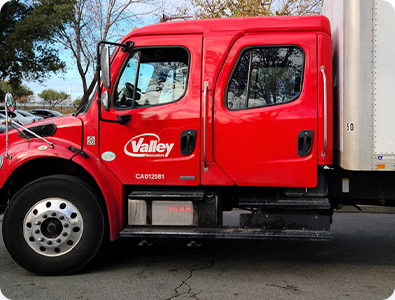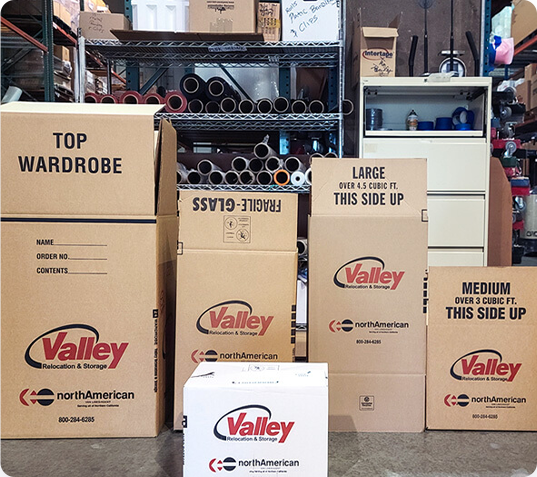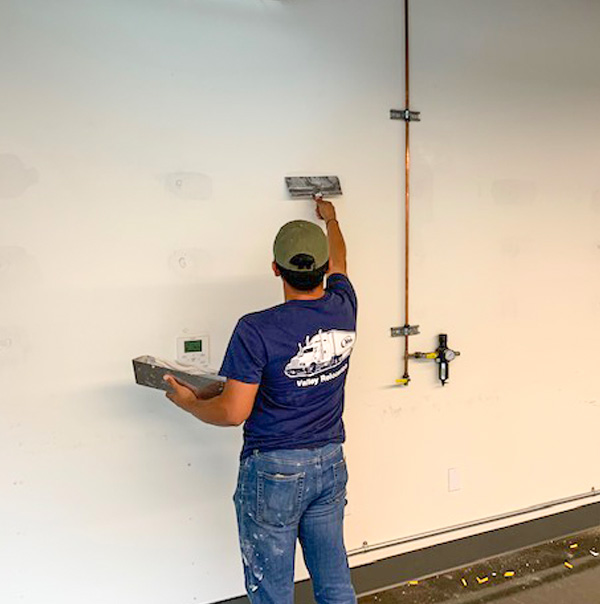In today’s rapidly evolving business landscape, the commercial moving industry has become an integral component of corporate growth and restructuring. This industry, often perceived as a mere facilitator of physical transitions, plays a crucial role in the seamless transfer of business assets from one location to another. It encompasses a broad range of services, from packing and transportation to the more nuanced needs of storage and warehousing. As companies increasingly engage in scaling, downsizing, or relocating operations, the demand for competent and reliable commercial relocation services has surged.
At the core of these services lies the crucial aspect of safety and security, particularly when it comes to warehouse and storage solutions. These services are not just about providing space to store goods; they are about ensuring that the assets, often critical to the functioning and success of a business, are kept in a state that preserves their quality, value, and usability. The right warehouse and storage facilities offer more than just space; they provide peace of mind, knowing that the business assets are in safe hands and protected from theft, damage, and environmental hazards.
This blog aims to provide readers with valuable insights into how these services work, why they are essential, and what factors to consider when choosing a service provider. Through this exploration, businesses can make informed decisions, ensuring their assets are well-managed and protected throughout the moving process, ultimately contributing to the smooth continuation and success of their operations.
The Commercial Moving Landscape
The commercial moving industry is experiencing a dynamic evolution, shaped by emerging trends and the ever-changing demands of businesses seeking strategic relocations. Understanding the current landscape is crucial for companies aiming to navigate the complexities of moving with finesse and efficiency.
Growing Trends in Commercial Moving
In recent years, several noteworthy trends have emerged within the commercial moving sphere, reflecting a shift towards more sophisticated and streamlined practices:
Flexible Workspace Solutions: The rise of remote work and the need for flexible workspaces have led to a surge in businesses adopting more agile office environments. This trend has influenced the way assets are moved, emphasizing the importance of adaptable moving services that can accommodate changing office layouts.
Sustainability Initiatives: Many businesses are now prioritizing sustainability in their operations, including during relocations. Eco-friendly packaging materials, energy-efficient transportation, and waste reduction strategies are becoming integral components of environmentally conscious commercial moving practices.
Challenges Faced by Businesses During Relocation
While commercial moving presents opportunities for growth and optimization, it is not without its challenges. Businesses encounter a myriad of obstacles that can hinder the seamless transition of assets and operations:
Downtime and Business Disruptions: One of the primary challenges is the potential disruption to regular business operations during the moving process. Minimizing downtime is crucial, and any delays can have a significant impact on productivity and revenue.
Asset Damage and Loss: The risk of damage or loss of valuable assets is inherent in any relocation. Fragile equipment, sensitive documents, and expensive machinery are susceptible to damage during transportation if not handled with utmost care.
Logistical Complexities: Coordinating the logistics of a commercial move, especially for large enterprises, involves intricate planning. Ensuring that all assets arrive at the destination on time and in the correct order requires meticulous organization and coordination.
Role of Warehouse and Storage Services in Addressing These Challenges
In the face of these challenges, warehouse and storage services emerge as indispensable allies for businesses undergoing relocation. These services play a pivotal role in mitigating the complexities associated with commercial moving:
Temporary Storage Solutions: Warehousing services offer a practical solution to the challenge of downtime. By providing temporary storage, businesses can gradually transition their assets, minimizing disruptions to ongoing operations.
Asset Protection and Security: High-security warehouse facilities ensure that valuable assets are protected during the entire moving process. Surveillance systems, access controls, and climate-controlled storage contribute to safeguarding assets against theft, damage, and environmental factors.
Logistical Support: Warehousing services extend beyond storage; they provide a logistical backbone to the moving process. Effective inventory management, order fulfillment, and distribution services contribute to a smoother transition and help businesses maintain operational continuity.
Ensuring Safety in Commercial Moving
Ensuring the safety and security of assets during a commercial move is paramount. This section delves into how a well-planned moving strategy and professionalism in commercial moving contribute to achieving this goal.
Importance of a Well-Planned Moving Strategy
The success of a commercial move largely hinges on the robustness of the planning phase. A strategic approach is vital in mitigating risks and ensuring a smooth transition.
Minimizing Disruptions to Business Operations
Detailed Planning: The process begins with a comprehensive plan that outlines every stage of the move. This plan should factor in timelines, resource allocation, and contingency measures.
Phased Approach: Implementing the move in phases can be effective in reducing operational downtime. For instance, moving non-essential items first and keeping critical operations running until the last phase.
Communication Strategy: Keeping all stakeholders, including employees, clients, and suppliers, informed about the move schedule can help manage expectations and reduce the impact on business operations.
Reducing the Risk of Damage to Goods
Asset Inventory and Assessment: Conducting a thorough inventory and condition assessment of all items to be moved helps in identifying items that require special handling or insurance coverage.
Customized Packaging Solutions: Utilizing packaging materials and techniques that are specifically suited to the type of goods being moved. Fragile items, electronics, and machinery need different packaging approaches to ensure their safety.
Route and Transport Planning: Choosing the safest and most efficient transport routes and modes to minimize the risks associated with transit, such as accidents or delays.
Professionalism and Expertise in Commercial Moving
The caliber of the personnel and the methodologies employed in the moving process are critical to ensuring safety and efficiency.
Qualified Personnel for Handling Sensitive Equipment
Training and Experience: Employing a team of movers who are not only trained in general moving practices but are also skilled in handling specialized equipment. This is particularly important for items like IT hardware, laboratory equipment, or manufacturing machinery.
Certifications and Compliance: Ensuring the moving team adheres to industry standards and holds relevant certifications, especially when handling hazardous materials or operating heavy machinery.
Specialized Packaging and Handling Procedures
Use of Advanced Tools and Equipment: Utilizing the latest tools and equipment for safe handling and packaging. This includes equipment like custom dollies, hoists, and crating systems designed for specific items.
Custom Padding and Crating: Designing and using custom crates and padding materials for high-value or fragile items, ensuring they are securely packed and shielded from potential transit damage.
Loading and Unloading Protocols: Establishing strict protocols for loading and unloading, including the sequencing of items, balancing the load, and securing items to prevent movement during transportation.
The Role of Secure Warehousing
Warehousing services play a pivotal role in the safety and security of assets during commercial moving. A secure warehouse goes beyond providing space; it incorporates advanced features that safeguard assets against theft, damage, and environmental factors. This section explores the crucial elements that define the role of secure warehousing in commercial moving.
Features of a Secure Warehouse
Access Control Systems
A secure warehouse begins with robust access control systems that regulate entry and exit. These systems go beyond traditional lock-and-key mechanisms, incorporating modern technologies to ensure authorized personnel and approved visitors are the only ones gaining access.
Access cards with electronic codes provide a trackable and customizable means of granting entry. Access levels can be assigned, limiting individuals to specific areas based on their roles and responsibilities.
Surveillance and Monitoring Technologies
State-of-the-art surveillance and monitoring technologies are integral to maintaining a secure environment within the warehouse. These technologies act as a deterrent to potential security breaches and offer real-time insights into the activities within the facility.
CCTV Systems: Comprehensive Closed-Circuit Television (CCTV) systems with strategically placed cameras provide continuous monitoring of all areas within the warehouse. High-resolution cameras coupled with remote access allow for effective surveillance.
Intrusion Detection Systems: Sensors and alarms that detect unauthorized access or suspicious movements enhance the security framework. Immediate alerts enable swift response to potential threats.
Climate-Controlled Storage for Sensitive Items
Benefits of Climate-Controlled Storage
Climate-controlled storage is a specialized feature that goes beyond security, focusing on maintaining optimal environmental conditions for items that are sensitive to temperature and humidity fluctuations.
Preservation of Goods: Climate-controlled storage prevents damage to items sensitive to extreme temperatures, ensuring the preservation of goods over time. This is particularly critical for items such as electronics, artwork, and archival documents.
Reduced Risk of Mold and Mildew: By regulating humidity levels, climate-controlled storage reduces the risk of mold and mildew growth. This is essential for items like wooden furniture, fabrics, and paper-based materials.
Examples of Items that Require Special Storage Conditions
Electronics and IT Equipment: Sensitive to temperature variations, electronics and IT equipment benefit from climate-controlled storage to prevent malfunctions and damage.
Artwork and Antiques: Climate control helps preserve the integrity of paintings, sculptures, and antiques, preventing warping, cracking, or fading.
Pharmaceuticals and Medical Supplies: Medications and medical supplies often require specific temperature and humidity conditions for efficacy and safety.
Wine and Spirits: Maintaining a consistent temperature is crucial for the aging process and overall quality of wine and spirits.
Benefits of Utilizing Warehouse and Storage Services
Warehouse and storage services offer businesses a range of advantages, making them an indispensable component of the commercial moving process. This section explores the multifaceted benefits that come with outsourcing storage needs to professional facilities.
Cost-Effectiveness of Outsourcing Storage
Avoiding the Need for Large-Scale On-Site Storage
One of the primary advantages of utilizing warehouse and storage services is the cost-effective alternative they provide to maintaining large on-site storage facilities.
Reduced Overhead Costs: Renting or maintaining a large storage space on-site can significantly contribute to overhead costs. By outsourcing storage to a specialized facility, businesses can scale their storage needs without the burden of high fixed expenses.
Optimized Space Utilization: Professional storage services are equipped to maximize space utilization efficiently. This means businesses only pay for the space they use, avoiding the inefficiencies that may arise from underutilized on-site storage.
Flexible Storage Options Based on Business Needs
Warehouse and storage services offer flexibility tailored to the unique requirements of businesses, allowing for dynamic adjustments as needs evolve.
Scalability: Businesses often experience fluctuations in storage needs due to seasonal changes or growth. Outsourcing storage allows for scalability, ensuring that additional space is readily available during periods of increased demand.
Short-Term and Long-Term Options: Whether a business needs short-term storage during a transition or long-term solutions for inventory management, warehouse services offer customizable storage durations to meet diverse business timelines.
Reducing Risks Associated with In-House Storage
Security Risks
In-house storage poses inherent security challenges that can jeopardize the safety of valuable assets. Warehouse and storage services, on the other hand, implement comprehensive security measures.
Advanced Surveillance Systems: Professional storage facilities invest in cutting-edge surveillance technologies, including CCTV systems, access control, and alarm systems, minimizing the risk of unauthorized access or theft.
Trained Security Personnel: Warehouse services often employ trained security personnel to monitor and safeguard the premises, providing an additional layer of protection against potential threats.
Potential Damage and Loss Risks
The controlled environment and specialized handling procedures of warehouse services significantly mitigate the risks of damage and loss associated with in-house storage.
Climate-Controlled Storage: Warehouses offering climate-controlled storage protect sensitive items from temperature fluctuations, humidity, and other environmental factors that can cause damage.
Professional Handling and Packaging: Trained personnel handle items with care, utilizing specialized packaging techniques that minimize the risk of breakage, scratches, or other forms of damage during storage and transportation.
Choosing the Right Warehouse and Storage Partner
Selecting an appropriate warehouse and storage service provider is a critical decision for businesses engaging in commercial moving. This choice can significantly impact the efficiency, security, and cost-effectiveness of the moving process. Luckily for business owners in California, they no longer have to linger around in search of a moving partner that can simplify the process. Valley Relocation is ready for the job!
We offer several different types of moving services, including warehouse and storage services, facility services, commercial moving services, free site surveys, specialized transportation, and a lot more that can make moving a business a menial and easy job!
To get a free site survey or to get professionals to help you move a business, make sure you get in touch with us today.





